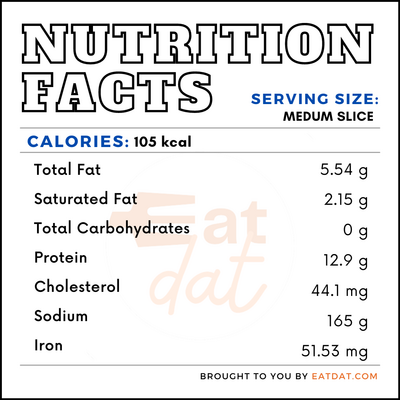
Beef
What is Beef?
Beef is the culinary name for meat from cattle, which includes both cows and bulls. The best variety of this meat is thought to come from castrated bulls and unbred cows. Meat from different parts of the cattle are used for different dishes, and often provide a slight variety in texture and taste.
- The main and most popular cuts of this meat are chuck, rib, short loin, sirloin, round, brisket, fore shank, short plate, and flank.
- Beef is a flavorful meat with complex flavors due to the fats and lipids present in the meat.
Some of the most popular beef dishes in the world are:
- Sukiyaki
- Galbi
- Gyudon
- Milanesa
- Ansim
- Pot Roast
- Chateaubriand
- Beef Stroganoff
- Steak au Poivre
- Picanha
Origin of beef
This meat has been consumed by humans since prehistory. Cave humans ate meat from aurochs, the ancestor of the modern cow, which is depicted in cave paintings. Aurochs originated in the Indian Subcontinent and then spread throughout Asia, Europe, and Africa. Around 8,000 years ago, humans began to domesticate wild animals, including cattle. This type of meat has been consumed throughout human history. In the 1500s, the Spanish conquistadors introduced cattle to the Americas, where buffalo had been the main meat. However, despite its widespread consumption, beef was only available to the wealthy on a regular basis and most people only ate it on special occasions.
Nutrition
Nutritional profile for beef (medium slice):

Also, this meat contains other essential micronutrients such as magnesium, phosphorus, potassium, zinc, selenium, and choline. However, high consumption of it can lead to diseases such as colon cancer, inflammatory diseases such as atherosclerosis, diabetes, rheumatoid arthritis, macular degeneration, as well as infertility. If consumed in moderation, this meat is a nutrient-dense food that increases the bioavailability of certain micronutrients.
Commercial production
The USA is the largest producer of this meat in the world. Brazil, China, India, and Argentina, along with the US, account for 70 percent of the world’s production. The beef industry is one of the largest food-based industries.
Farms which produce this meat keep a large number of cows, and calves are born once a year. At first, they live off their mother’s milk and are weaned off at about 6 months. Then, they are allowed to graze or eat other food, and then get sold off to the butchering company, where they are kept in bunks and fed with food such as roughage and grain to ensure that they gain weight. Around 18 to 22 months of age, they are sent off to the packing plant for slaughtering. Finally, the end product is packaged and sent out for distribution.
Beef recipes
This meat can be cooked in a variety of ways, and incorporated into most cuisines. When it comes in contact with heat, it develops more flavors. Some of the more popular dishes that use this meat around the world include hamburgers, galbi, and rendang. Here are some recipes to try:
- Boeuf Bourguignon
- Roast Beef and Yorkshire Pudding
- Braciola
- Beef and Guinness Stew
- Svenska Köttbullar
- Lapskaus
- Hakkebøf
- Mechadong Baka
- Lok Lak
- Gyudon
- Pad Gra Prow
- Nihari Gosht
- Suya
- Nyama
- Trinchado
- Bobotie
- Kabob Koobideh
- Bariis Maraq
- Mini Meat Pies
FDA regulations
The USDA regulates all meat products, including beef, which is defined as meat from full-grown cattle about 2 years old. The main cattle breeds used for producing this meat are Angus, Hereford, Charolais, and Brahman. In the US, hormones are allowed to promote the growth of cattle. This food item’s grading is voluntary and ranges from Prime to Choice to Select.
References
Beef: It’s What’s for Dinner, Exploring the Beef Lifecycle, https://www.beefitswhatsfordinner.com/raising-beef/production-story
The History of Beef, Hankering for History, https://hankeringforhistory.com/the-history-of-beef/
Klurfeld, David M. “What is the role of meat in a healthy diet?.” Animal frontiers : the review magazine of animal agriculture vol. 8,3 5-10. 7 July. 2018, doi:10.1093/af/vfy009, https://www.ncbi.nlm.nih.gov/pmc/articles/PMC7015455/
Alisson-Silva, Frederico et al. “Human risk of diseases associated with red meat intake: Analysis of current theories and proposed role for metabolic incorporation of a non-human sialic acid.” Molecular aspects of medicine vol. 51 (2016): 16-30. doi:10.1016/j.mam.2016.07.002
https://www.ncbi.nlm.nih.gov/pmc/articles/PMC5035214/
